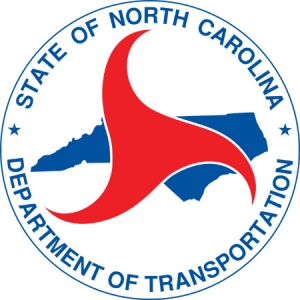Animal collisions increase this time of year
By Staff Reports
Published in News on October 16, 2017 5:50 AM

There have been 14 deaths, 3,356 injures and nearly $136 million in damages between 2014-16 because of 53,775 vehicle-animal crashes. Most of the crashes involve deer.
During that same period, 2014-16, Wayne County reported 713 crashes, 49 injuries and $1,786,575 in damages.
Statewide, 47.5 percent of the crashes happen over a three-month period -- October (13.1 percent) November (21.8 percent) and December (12.6 percent).
The most crashes came in the evening between 5 p.m. and midnight, with 50 percent of the overall total. In addition to being the time when deer are more likely to be moving about and crossing roads, it is when decreased driver visibility makes it more difficult to see the animals on or near roadways.
Along with cooler weather, autumn in North Carolina is the time of the year when deer start showing up in greater numbers along the state's roadways, which means the greater chance for a collision with vehicles.
Statewide, the number of animal-vehicle collisions in North Carolina in 2016 was 17,901, just 136 fewer than the year before.
That put the total over the past three years at close to 54,000 collisions, a great majority being with deer.
"This time of year, it is especially important for all of us to watch for deer," said Transportation Secretary Jim Trogdon.
For the 14th year in a row, Wake County led the state in the number of animal-related crashes with 730, which was a drop of more than 100 from 2015.
However, it was still 180 more crashes than in runner-up Pitt County.
Also, over the past three years, Wake County had more than 730 more animal-related crashes than any other county. The high number is attributed to the increasing number of drivers and road mileage in the county, which still has considerable wooded acreage.
Guilford County had the third-highest figure at 549 crashes in 2016, followed by Duplin (515), Union (462), Mecklenburg (458), Columbus (450), Randolph (445), Brunswick (428) and Forsyth (425) counties.
Wayne County had 244 reported crashes in 2016.
Counties in the far western part of the state have fewer drivers and roads, so they again had the lowest number of animal crashes.
Graham County had just eight, while Swain County had 10.
Deer are on the roadways more during the fall into early winter due to the hunting and mating seasons.
They also tend to travel more during times when it is tougher to see them, at dawn and at dusk.
With the end of daylight saving time at 2 a.m. on Sunday, Nov. 5, it increases the chance of deer being by roadways when more drivers are on the road for the morning and afternoon commutes.
The Department of Transportation has some tips for motorists to avoid being in a deer-vehicle crash:
* Slow down in posted deer crossing areas and heavily wooded areas, especially during the late afternoon and evening.
* Always wear your seat belt. Most people injured in deer-vehicle crashes were not wearing their seat belt.
* Statistics indicate most deer-vehicle crashes occur in areas where deer are more likely to travel, such as near bridges or overpasses, railroad tracks, streams and ditches.
* Drive with high beams on when possible, and watch for eyes reflecting in the headlights.
* Remember that deer often travel in groups, so do not assume that if you see one deer cross the road in front of you, there won't be others following.
* Slow down and blow your horn with one long blast to frighten the deer away.
* Increase the distance between your vehicle and other cars, especially at night. If the car ahead of you hits a deer, you could also become involved in the crash.
* Do not swerve to avoid a collision with deer. This could cause you to lose control of your vehicle, and flipping it over, veering it into oncoming traffic or overcorrecting and running off the road, causing a more serious crash.
* Do not rely on devices such as deer whistles or reflectors to deter deer as these devices have not been proven to reduce deer-vehicle crashes.
* If your vehicle strikes a deer, do not touch the animal. A frightened and wounded deer can hurt you or further injure itself. The best procedure is to get your car off the road if possible, and call 911.
